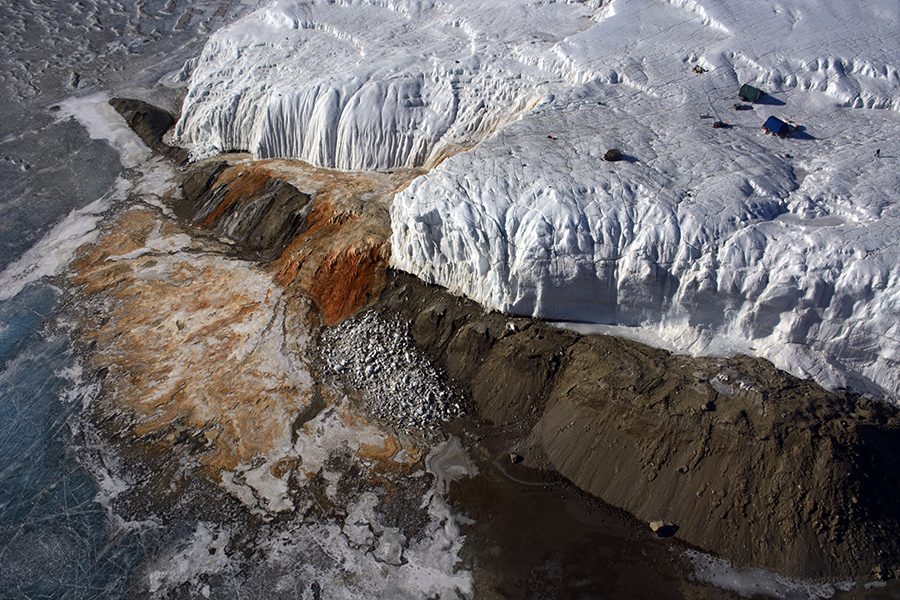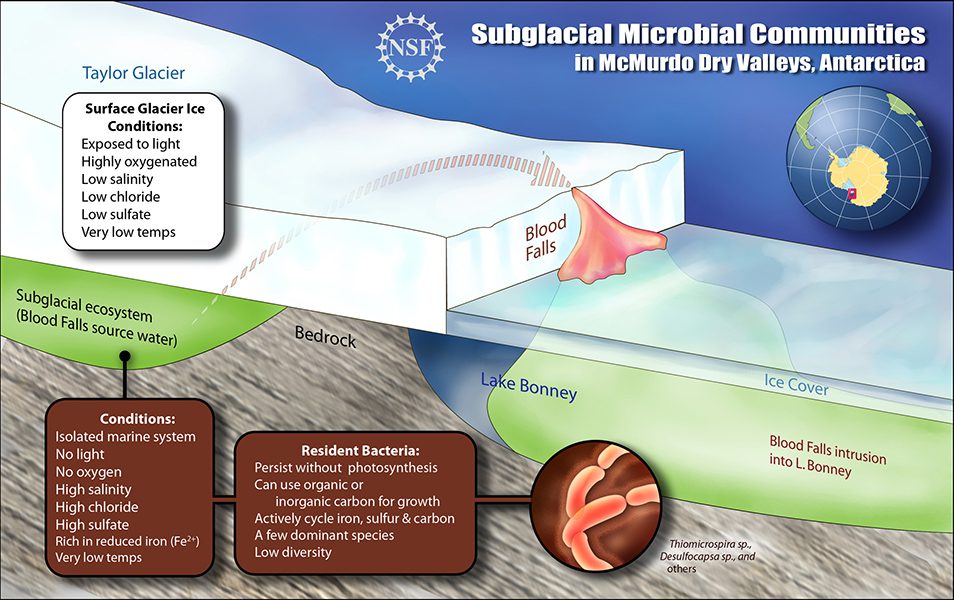Blood Falls is a waterfall of vibrant red water that oozes out of the Taylor Glacier in Victoria Land, East Antarctica. For decades, this strange sight confused the brave explorers who managed to reach this distant valley. While we now have a solid idea of what’s causing this hellish phenomenon, research over the past few decades has revealed that this small slice of Antarctica is perhaps even weirder than it first appears.
Bloods Fall was first found in 1911 by British explorer Thomas Griffith “Grif” Taylor during one of the early Antarctic expeditions by Europeans. At the time, Taylor and his crew thought the vibrant color was due to red algae.
However, this later proved to be incorrect. It wasn’t until the 1960s that scientists were able to show that Blood Falls’ red hue was actually the result of iron salts, or ferric hydroxide, that were being squeezed out of the ice sheet.

It’s bloody cold! Another shot of Antarctica’s Blood Falls. Image credit: Peter Rejcek/NSF/Public Domain
Microorganisms might still be part of the wider picture, though. In 2009, scientists discovered that the reddish water seeping out of the Taylor Glacier originates in a saltwater lake that’s laid trapped in the ice for 1.5 to 4 million years. In fact, this lake is just one part of a much larger underground system of hyper-salty lakes and aquifers.
Analysis of the water from Blood Falls indicated that the buried bodies of super salty water are home to a rare subglacial ecosystem of bacteria – despite an almost total absence of oxygen. This means the bacteria is persisting without photosynthesis and likely sustains itself through cycling iron from the brine.
On top of this, the water is well below freezing point, with a temperature of around -7°C (19.4°F) when it leaves the glacier. It only manages to stay liquid due to its high salt content.
Much to the annoyance of scientists, it’s still unclear what is actually pushing the reddish brine out of the glacier to the surface. Clearly, there is a colossal geological force going on, but we have little idea of what that force is.

The illustration shows where the source water for Blood Falls comes from. Image credit: NSF. Image credit: NSF
Since the water has been trapped beneath the glacier for millions of years, the outpour from Blood Falls could act as a “time glacier” from an era when our planet was very different to now. A 2009 paper explains that the Blood Falls system and its strange microbial inhabits could explain how life on Earth managed to survive in times when the entire globe was frozen over, such as during the proposed Snowball Earth period.
It could also shed some light on how lifeforms could potentially exist on other planets with similar subglacial bodies of frozen water, such as Mars and Jupiter’s moon Europa.
Source Link: Blood Falls In Antarctica Oozes A Gruesome Red, And Shows Life At Its Most Extreme